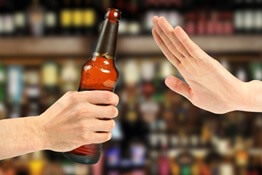The question: Should a person with a Blood Alcohol Count of .06 or .07 be driving? Currently, under the .08 threshold for legal impairment, they may be on the road. A further question: Would lowering the legal threshold to .05 make a difference in the number of lives lost in fatal car crashes every year?
These are the questions currently on debate as a result of the recent recommendation by the National Transportation Safety Board. This recommends to reduce their legal threshold for drunken driving to .05. Much of the debate currently focuses on what we might consider semantic issues of “drunk” versus “buzzed” driving. Should “buzz”driving be legal?
 Negative Affects of Alcohol on Driving
Negative Affects of Alcohol on Driving
Here’s what we know: Alcohol “” any amount of alcohol “” negatively affects the Central Nervous System; this includes impairment of vision, lack of muscular coordination and lengthened reaction time. A new National Highway Transportation and Safety Administration chart shows that a person with .05 BAC experiences “reduced coordination, reduced ability to track moving objects, difficulty steering, (and) reduced response to emergency driving situations.”
Most importantly, alcohol also impairs a person’s judgment and removes inhibitions.
Put in real terms, a 180-pound man might consume four beers in one hour and have a BAC of .073-legal to drive under today’s .08 threshold. A 140-pound woman who has had three glasses of wine in two hours will have a BAC of .063 “” also legal to drive under today’s standards.
Are we okay with this? Would you want your 21-year-old son getting behind the wheel after four beers in one hour?
It’s also important to note that these BAC numbers don’t factor in intervening variables. For example, how tired a person is or how much they’ve eaten.
Save Lives by Lowering the Blood Alcohol Count?
As a clinician and academic who specializes in addiction treatment, I certainly don’t advocate a zero-tolerance approach to alcohol and substance use. However, our experience has shown us that public policy can and has affected public health. We know that when the legal drinking age was raised by federal decree in 1984, highway fatalities were significantly reduced. The NHTSA estimates that over 25,000 lives were saved through 2008 “” almost a thousand lives a year.
In the current debate, a study by the Insurance Institute for Highway Safety has estimated 7,082 deaths would have been prevented in 2010 if all drivers on the road had blood alcohol content below .08 percent. Those are real lives.
Would Lowering the BAC Change People’s Behavior?
Will lowering the BAC threshold actually affect people’s behavior? For those with a drinking problem, probably not. But for the recreational drinker, who might plan their evening around a limited number of drinks, Â the answer is yes.
With the current BAC threshold of .08, we are putting even the casual drinker at risk. Essentially, we are condoning driving when one has drank alcohol to a point of impairment. When that 180-pound man is on his (legal) fourth beer, his judgment and driving is costly. With substance abuse treatment, we can bring forth awareness to these concerns and save lives in the process. Alcohol addiction treatment is a great way to overcome your alcohol abuse.
Is he “drunk”? Does that matter? If a person is killed by an alcohol impaired driver, does it really matter if we consider them “drunk” or “buzzed”?


 Negative Affects of Alcohol on Driving
Negative Affects of Alcohol on Driving




